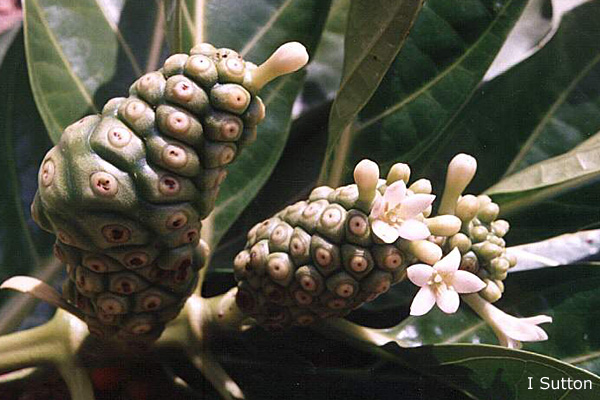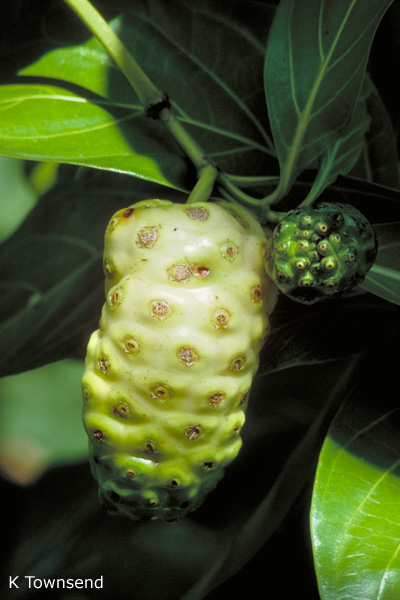General Description:
Morinda is a genus of about 80 species, mostly of tropical origin. There are 7 species found in Australia. M.citrifolia is a large shrub to medium tree varying from between 3 metres and 12 metres high. It has oval shaped leaves to about 300 mm long by 150 mm wide. The white flowers occur in the leaf axils in clusters and occur mainly in summer and autumn. They are followed by succulent fruits which fuse into a large compound structure as they ripen. The fruits are edible but have a have a very pungent aroma when ripe, apparently to attract fruit bats which are dispersal agents for the seeds.
The juice from the fruit is regarded as having a range of medicinal properties. In fact a small industry has buit up around the fruit which is being marketed as “Tahitian or Hawaiian Noni”. The juice is high in vitamin C and there is a high demand for it as an alternative medicine for a host of illnesses…….arthritis, diabetes, high blood pressure, muscle aches and pains, menstrual diffiulties, headaches both mild and severe, heart disease, AIDS, cancers, gastric ulcers, sprains, mental depression, senility, poor digestion, atherosclerosis, blood vessel problems, drug addiction and more! Scientific evidence of the benefits of the juice is limited but there is some anecdotal evidence for successful treatment of colds and influenza.
There are numerous web sites that provide background to the commercial use of the juice – a search for “Tahitian Noni” will result in a multitude of ‘hits’.
The strong aroma of the fruit is off-putting and, for this reason, the plant is not cultivated widely in gardens. It is however, useful for coastal erosion control. It is best suited to tropical areas.
Propagation may be carried out from both seeds or cuttings.

Flowers of Morinda citrifolia
Photo: Ian Sutton

Fruit of Morinda citrifolia
Photo: Keith Townsend
 Australian Native Plants Society (Australia)
Australian Native Plants Society (Australia)













